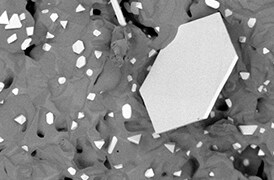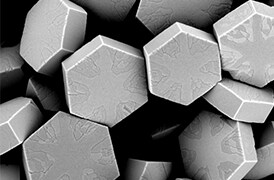Modern materials science research has moved beyond traditional metals and coated samples. Today, there is a need for micro- and nano-scale information on more complex, challenging materials, including those that are nonconductive, dirty, wet, chemically reactive, or outgassing.
While electron microscopy (EM) has long been the benchmark for materials structural analysis, it has been limited to samples that are stable under vacuum. This generally does not represent the conditions experienced by the material in its native operating environment and can limit your understanding of its properties and behavior. Truly relevant observations, therefore, require high-resolution imaging and analysis under various experimental and environmental conditions. Sample preparation would ideally also be minimized to preserve the original state of the material.
Environmental scanning electron microscopy (ESEM) expands the boundaries of traditional SEM to deliver deeper insights into all types of samples. ESEM allows for imaging of samples with minimal preparation and adds variables such as hydration, thermal cycling, and the introduction of gas to characterize in situ dynamic changes. Using water vapor and a temperature control stage, some of the “impossible to image samples” such as dirty (highly outgassing) and naturally hydrated samples (whose properties will change with drying) are now easily characterized.
Environmental scanning electron microscopes
With full control of sample hydration, materials and life scientists can observe real-time material interactions in solution, along with how humidity changes a material and how water interacts with the sample surface. This moves research possibilities from pure static points in time to dynamic or in situ experimentation.
ESEM can be performed on our flexible and easy-to-use platforms without compromising on resolution. These ultra-versatile high-resolution SEMs combine all-around performance in imaging and analytics with an environmental mode that allows you to study samples in their natural state.
_Hero_1440x390_144DPI.jpg)























